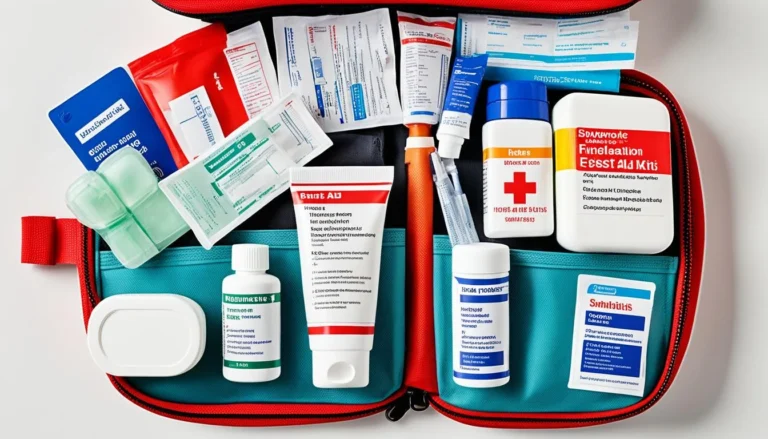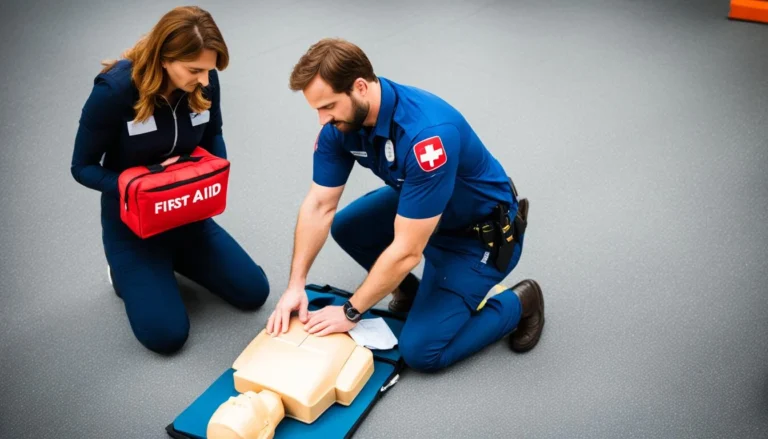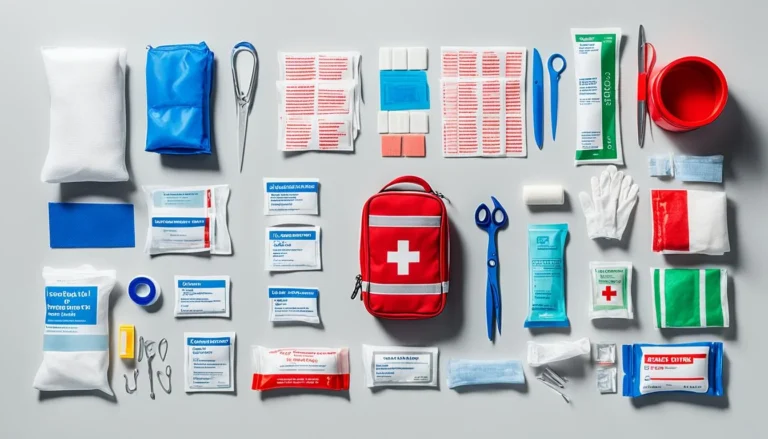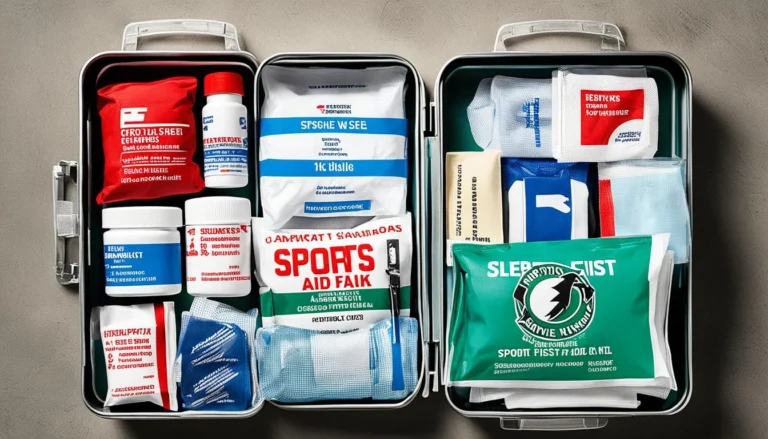Why Is First Aid Important In The Workplace
In the UK, keeping workplaces safe is top of the list. Yet, more than 441,000 workers get hurt on the job every year. This shows just how much we need solid first aid skills.
First aid means giving immediate help until the pros can get there. And guess what? Almost 59% of deaths from injuries could be stopped with quick first aid. That’s why teaching first aid makes a huge difference. It helps workers react well in emergencies, keeping everyone safer and even saving lives.
Key Takeaways
- Workplace safety in the UK sees over 441,000 employee injuries annually.
- First aid involves immediate medical assistance before professional help arrives.
- Effective first aid can reduce casualties, potentially preventing up to 59% of deaths from injuries.
- First aid training empowers employees to handle emergencies.
- Ensuring employee health and safety is paramount for workplace safety.
Understanding First Aid: A Basic Overview
First aid is the quick medical help people get after they get hurt or ill suddenly. It’s important as it takes care of the issue until a doctor can help. Trained people are key here, as their fast action can save lives.
At work, knowing what to do when an accident happens is crucial. If dealt with quickly and correctly, injuries might not be as bad. First aid training teaches workers how to help, from CPR to using first aid kits. This makes workplaces safer.
First aid covers everything from small cuts to heart attacks. Reacting fast and well can stop things from getting worse. This buys time until professional help arrives, which is critical in serious cases.
Having many people trained means everyone can work together if an accident happens. Places like the British Red Cross or St John Ambulance offer courses. These are not just rules, but key for a workplace that’s ready to act fast when needed.
Legal Obligations for First Aid in UK Workplaces
Workplace health and safety are both a responsibility and a right in the UK. Employers must follow the 1981 Health and Safety (First Aid) Regulations to protect workers. These rules ensure that first aid resources match the risks at a workplace.
Health and Safety (First Aid) Regulations (1981)
In 1981, the UK introduced laws that say employers must have the right first aid supplies and people. The goal is to act quickly if someone is hurt or falls ill at work. The regulations consider different work types and sizes, focusing on keeping everyone safe.
Responsibilities of Employers
Providing first aid is a key duty for employers. They must assess risks, choose the right first aiders, and make sure help is always available. Not doing so could lead to serious consequences. It’s all about keeping the workplace safe and the business running smoothly.
The Scale of Workplace Injuries in the UK
In the UK, workplace injuries are a big issue. Each year, the Health and Safety Executive notes over 581,000 injuries and 147 deaths. These numbers tell us just how risky some jobs are. The effects reach far, costing lives, about £15 billion and 28.2 million lost work days.
It’s clear how important it is for workers to know first aid and be ready. Quick first aid can lessen an injury’s impact, even save lives. In light of these risks, being prepared with good first aid skills is critical for jobs across the UK.
| Metric | Value |
|---|---|
| Total Work-Related Injuries | 581,000 |
| Annual Fatalities | 147 |
| Cost of Injuries | £15 billion |
| Working Days Lost | 28.2 million |
It’s crucial for workers to be ready to act in emergencies. This helps cut down on both the human cost and the money lost. Businesses that focus on safety see real benefits, as shown by these key stats from the Health and Safety Executive.
First Aid Training: Ensuring Compliance and Safety
First aid training is key for meeting first aid rules and keeping workplaces safe. It makes sure businesses follow the law. Plus, it makes the work area safer by teaching workers how to handle emergencies well.
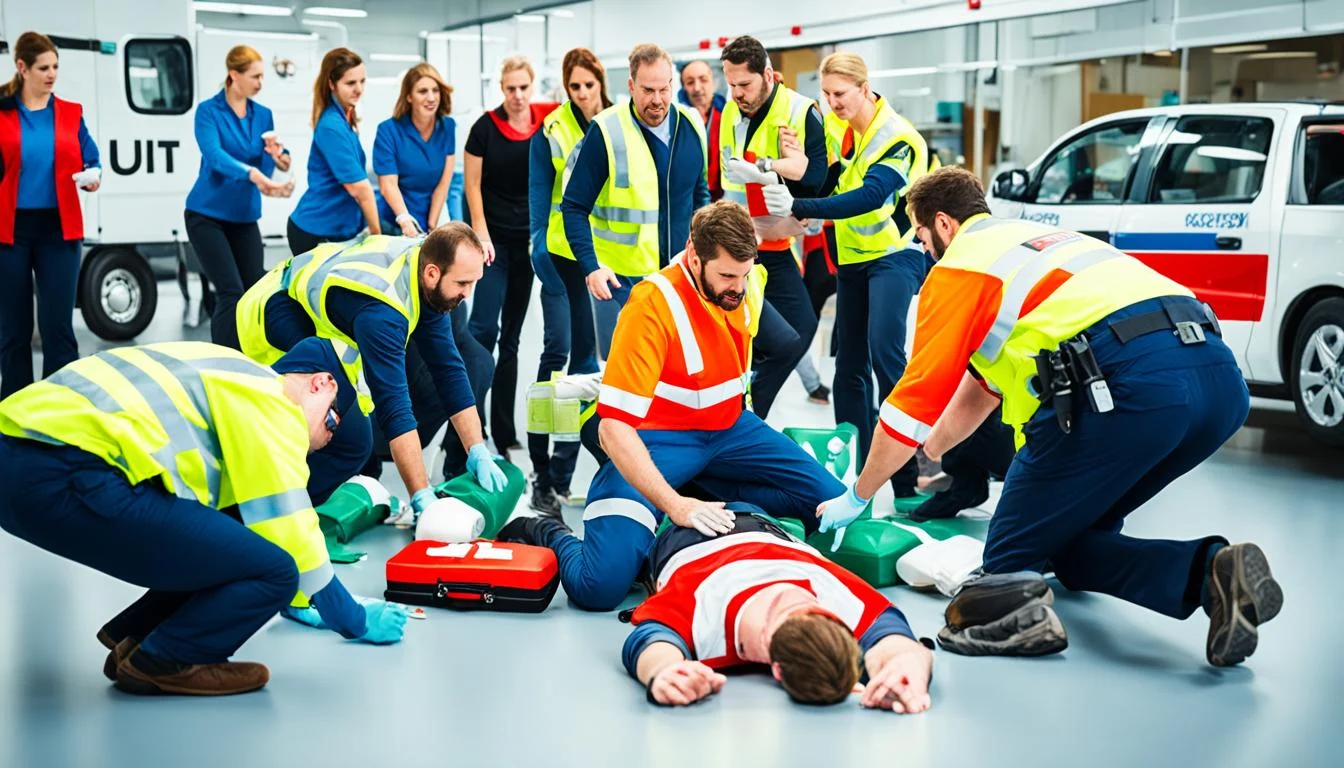
Types of First Aid Courses
Different first aid courses suit various workplace needs. For example, basic courses teach simple skills like CPR. And more detailed ones go into advanced first aid methods.
- Basic First Aid: Teaches fundamental skills for minor injuries and common ailments.
- Emergency First Aid at Work (EFAW): Focuses on handling serious incidents in high-risk environments.
- Paediatric First Aid: Specialised training for those working with children.
- Advanced First Aid: In-depth course for severe and complex emergencies.
Choosing the Right Course for Your Workplace
Picking the right first aid course means looking closely at your workplace’s dangers and staff needs. It’s about knowing the risks and how many people work there. This helps decide on the best safety training level.
| Course Type | Suitable For | Key Benefits |
|---|---|---|
| Basic First Aid | Low-risk workplaces | Quick response to minor incidents |
| Emergency First Aid at Work (EFAW) | High-risk workplaces | Effective management of serious injuries |
| Paediatric First Aid | Childcare settings | Specialised care for children’s needs |
| Advanced First Aid | Large organisations | Comprehensive emergency response education |
Putting first aid and safety training first helps companies deal with any emergency. It makes the team feel secure and ready to face challenges.
Workplace First Aid Saves Lives
First aid at work does more than follow rules. It’s key in saving lives. Quick and skilled help during a crisis is vital.
The Role of Immediate Response
Speed makes a huge difference in emergencies. Acting fast can change outcomes, especially when CPR is needed. For each minute help is delayed, survival drops by 10%. Having people who know first aid ready can really help.
Statistics on Preventable Deaths
Doing first aid right can stop many deaths. Studies show that fast first aid can stop 59% of deadly injuries at work. Knowing these preventable fatalities statistics highlights the need for quick emergency care. Being ready saves lives and boosts safety at work.
| Key Factors | Impact |
|---|---|
| Immediate Emergency Response | Increases survival rates by up to 10% per minute |
| Lifesaving First Aid | Prevents 59% of workplace fatalities |
Creating a Safer Working Environment
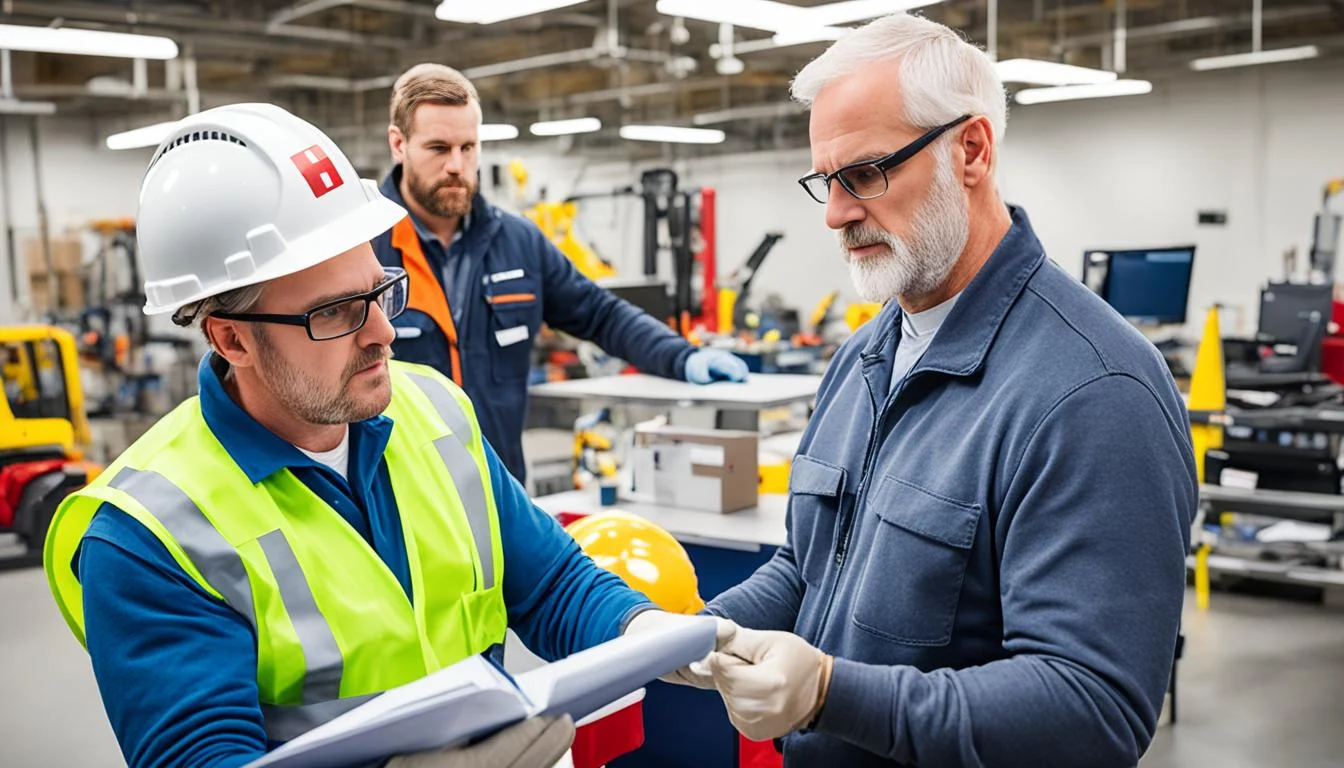
In today’s quick workspaces, focusing on preventing risks is key. It’s vital for employers to spot and deal with any dangers. This keeps the workplace safe for everyone.
Hazard Awareness and Prevention
Teaching employees about work dangers is important. By having regular training, staff can spot risks. They can then act fast to prevent issues. This approach really cuts down on work accidents.
Building a Safety-Oriented Culture
Making everyone responsible for safety is part of creating a safer place to work. Talking openly about safety worries and marking safety successes can help. Setting safety in stone within company rules means it’s a top priority everywhere.
Below is a comparative table illustrating common workplace hazards and preventive measures:
| Hazard | Preventive Measure |
|---|---|
| Slips and Trips | Ensure floors are clean and dry; use warning signs for wet floors |
| Manual Handling | Provide training on proper lifting techniques; use mechanical aids |
| Fire Hazards | Install and maintain fire suppression systems; conduct regular fire drills |
| Electrical Safety | Regular checks and maintenance of electrical equipment; avoid overloading sockets |
Focusing on preventing risks and boosting safety awareness is vital. This, along with a strong safety culture, makes for a safer, better workplace. It looks after and supports everyone working there.
The Impact of First Aid on Employee Morale
Making the workplace safe and caring with good first aid helps a lot. Employees feel more valued when they know their health is important. This makes them trust and care more about their job and the company.
Boosting Confidence and Pride
Having first aid available at work increases workplace confidence. It makes workers feel safer and ready for any health crisis. Feeling prepared makes them proud of where they work. It also encourages them to be more dedicated and eager workers.
Enhancing Team Cohesion and Trust
Learning first aid helps teams become closer. When they train together, they bond and trust each other more. They know they can rely on their team in a crisis. This strengthens their teamwork and sense of looking out for one another’s safety.
| Factor | Impact on Employee Morale |
|---|---|
| Boosting Confidence | Enhances personal and professional assurance among employees. |
| Instilling Pride | Promotes a sense of pride in one’s workplace and role. |
| Team Cohesion | Encourages closer bonds and trust among team members. |
| Building Trust | Fosters a supportive and reliable work culture. |
First Aid Reduces Recovery Times
Delivering first aid promptly can make a big difference in how quickly someone gets better. This quick help often makes recovery times shorter. It can also make the injury less severe at the start. First aid at work makes sure employees get the care they need quickly.
Quick help in case of an injury could stop someone from being off work for a long time. By quickly treating the injury, workers can get back to work soon. This keeps the work going and makes everyone feel they’re looked after.
The benefits of fast first aid are many:
- Less serious injuries
- Quicker time getting better
- Less chance of bad, lasting problems
- Workers missing less work
In summary, quick first aid is key for fast recovery from injuries. This isn’t just good for the person hurt but helps the company too, by keeping work running smoothly and avoiding long periods without employees.
Mitigating Lost Productivity Due to Injuries
Workplace injuries lead to more people being absent from work. This lowers how much work the workplace can do. If companies teach their workers good first aid, they can lower how much time people are away from work.
Reducing Employee Absenteeism
Using first aid to deal with injuries quickly helps stop people from missing work. Acting fast means people get better sooner and don’t have to stay away from work as long. This keeps the team strong and ready to work.
Maintaining Operational Efficiency
When there are people who know first aid around, they can help right away in a crisis. Their quick action means injured workers recover faster. It also stops the work from being interrupted too much. This keeps the company’s work running smoothly.
Here’s a table showing how important first aid training is for keeping work going well. It shows the difference it makes when people know first aid versus when they don’t.
| Aspect | With First Aid Training | Without First Aid Training |
|---|---|---|
| Absenteeism | Reduced absenteeism due to swift intervention | High absenteeism due to prolonged recovery times |
| Operational Efficiency | Minimised disruptions in workflow | Frequent disruptions in workflow |
| Workplace Productivity | Higher productivity due to healthier workforce | Lower productivity due to frequent absences |
Being ready with first aid is both legally good and smart for business. Trained staff can react fast in emergencies. This is good for everyone working and the business itself.
Implementing Effective First Aid Protocols
Making sure first aid is ready is vital to deal with emergencies at work fast and well. These instructions give a clear way to respond to different issues, from small to big health problems. With good first aid protocols in place, workers can act at once and without fear in any spot.
Having strong emergency protocols means doing a few important things. First, always have the right contacts for help. It’s also key to check equipment often and keep first aid kits full and available. Then, give each person a job to play during an emergency. This makes everything clearer and the response smoother.
To top it off, practice is crucial. Regular drills and training show workers what to do. This makes them confident and helps spot where the plan might fail. With this training grounded in safety procedures, companies are better prepared for any shocking situation.
First Aid and Business Image
First aid is a key part of keeping a good business name. It shows a business is serious about keeping its staff safe. This makes everyone think the company is caring and reliable.
Protecting Your Brand’s Reputation
How a company looks at safety affects its brand image a lot. Good first aid practices show the company is safe. This helps improve its reputation and stand out in the market.
Positive Perception by Employees and the Public
Looking after first aid helps make staff happier and feel safe. It also makes customers trust the brand more. This makes both employees and outsiders see the company as a safe and caring place.
It tells everyone that the company values its people and their health. This builds morale inside and trust outside, making the company better overall.
| Aspect | Impact |
|---|---|
| Employee Retention | Higher retention rates due to increased sense of security |
| Customer Trust | Enhanced trust resulting from a perceived commitment to safety |
| Brand Image | Stronger brand representation in the market |
| Public Perception | Positive perception due to responsible practices |
Conclusion: First Aid is an Investment in Safety and Success
First aid goes beyond just following rules. It’s about making workplaces safe and successful. When companies give staff first aid training and tools, they show they care. This care helps create a culture where everyone looks after each other.
This approach means when accidents happen, the team can respond fast. This keeps dangers low and improves safety for all.
But there’s more to it than just safety. Teaching first aid skills makes a more confident and happy workplace. It boosts team spirit, lowers the times people are off sick, and keeps work going strong.
When employees feel safe and valued, they work harder because they trust their company. This trust and effort are key to a company doing well.
Also, working on safety helps a company’s image. It shows others that the company cares about being responsible. This makes people want to join and trust the company. So, looking after the team is good for the company’s future and how it is seen by others.


